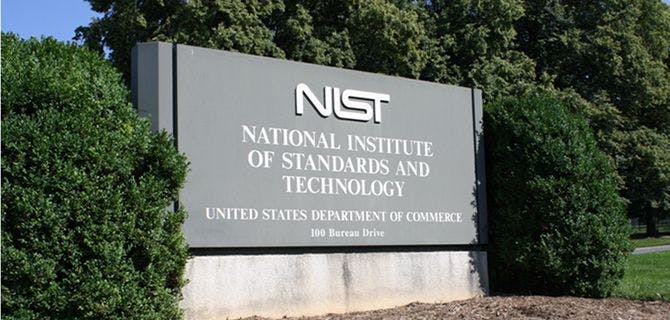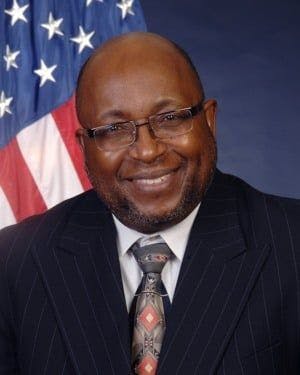Earlier this year, Willie E. May, Ph.D., stepped down as the director of the National Institute of Standards and Technology (NIST). In recognition of his outstanding career, he was chosen as the recipient of the American Chemical Society’s 2017 Award for Public Service. ASC Axial asked May to reflect on his 40 years of work […]


Earlier this year, Willie E. May, Ph.D., stepped down as the director of the National Institute of Standards and Technology (NIST). In recognition of his outstanding career, he was chosen as the recipient of the American Chemical Society’s 2017 Award for Public Service. ASC Axial asked May to reflect on his 40 years of work at NIST, championing diversity in STEM fields, his leadership style, and more.
What attracted you to a career in public service?
Truth be known, I came to the Washington area to work for the National Bureau of Standards (now NIST). It just so happened that NIST was a Federal Government Agency. However, I stayed for almost 45 ½ years because of NIST’s unique and public service-related mission. Most people, in addition to making a decent living, want to” make a difference” in some way, and at NIST I was able to do that every single day.
My dream as a kid was to be a baseball player, not a scientist. That should be no surprise with a name like Willie May(s), and growing up in Birmingham Alabama in the 1950’s/1960’s and in a community that, due to circumstances of that time, saw excellence in sports as “the way out”. I did fairly well in all my classes largely because it made my Mother happy and proud. I became attracted to chemistry in particular because of my high school chemistry teacher, Mr. Frank Cook who took a handful of us under his wing as 10th graders and exposed us to college-level studies in chemistry for 3 years. Based on this exposure, I began to think that this – science in general and chemistry in particular, might be my personal best way forward. I was attracted to work at the National Bureau of Standards because my Undergraduate roommate’s older brother, Dr. Dolphus E. Milligan was an internationally renown physical chemist at the Bureau and served as one of my early mentors there.
What advice would you give to people with STEM backgrounds who are looking to get into public service?
At a very high level, my advice to all young people is to find something that you are/or can be good at and can remain passionate about. When you find that true calling, you’ll never work at “a job.” You will have discovered the path to a rich and rewarding career.
Young people with STEM backgrounds, in particular, should realize that they are a highly sought after commodity. Many of our nation’s critical societal issues — healthcare, cybersecurity, advanced manufacturing to name a few– require knowledge of and expertise in the STEM disciplines. The public sector needs these skills more than ever. While you will probably not become rich from the monetary perspective , you’ll sleep well at night knowing that you’re been part of something bigger than yourself.
Having led an organization with thousands of employees, what is your leadership philosophy?
I haven’t spent much time thinking about leading. I’ve been thrust into situations where I was too busy trying to do it. Over the years, as I’ve gained experience at each of the different levels of management within NIST. As I ascended the so called management ladder, I saw myself doing more “leading” and less “managing.” By this I mean identifying major goals and objectives and then enlisting staff to commit to achieving them. I liken a real Leader to a Drum Major, not a Drill Sargent. If you’re out front and look back and the band is not following in-step nearby …. Well you are not leading.
I also feel that any successful leader has to be seen as being hard working, fair, and approachable. At NIST, that person also needs to be seen as having enough technical chops to command the respect of our world-class scientific staff.
You’ve spent your career fostering innovation and industrial competitiveness. What advice do you have for organizations looking to become more innovative?
Change is hard. Innovation is hard. To do it well you must have a great sense of mission. You must have well-articulated and strongly held core values and smart, committed, and empowered staff. And most important, to achieve something new that no one has achieved before, you must allow them the freedom to fail.
Did you give any advice to your successor?
First, the new NIST Director has to be nominated by the President and confirmed by the Senate. So that person has not been selected yet. I did however select and, over the course of the past year mentor, the current Associate Director for Laboratory Programs, who is now serving as the Acting NIST Director.
On January 3, the day I retired, I told him that the ship was now his until a new director is chosen and I have complete confidence that he will serve NIST well. He has all the qualities that I believe the Leader of NIST (short and longer-term) needs to succeed.
The list of qualities is actually rather substantial, but the top qualities include an appreciation for the unique culture and history of NIST, the ability to work well as part of an executive team, strategic vision, internally and externally-recognized technical chops and passion for NIST’s wide portfolio of program areas, a commitment to outcome-based decisions, strong communications skills, and last but not least, a steady hand under fire.
What are your hopes for the future of NIST?
I feel that I left NIST with a top notch leadership team and am confident that the agency will continue to prosper. NIST has a great and unique mission to advance innovation and help U.S. industry improve its competitiveness and share of global markets.
- NIST’s has been a key player for advancing the innovation agenda for the past two administrations (Bush’s and Obama’s); I see no reason to think things will change.
- NIST has become the nation’s go-to agency for measurements, standards, and technology in an increasingly broad number of areas.
- NIST has received bipartisan and bicameral support for the great work that we do and have done!
How can organizations champion diversity in STEM?
Nothing magic here; just do it! But the organizations that appear most successful are those that understand how diversity in its broadest sense, in terms of both ethnicity and thought, is critical to their business success.
Read more about Willie E. May’s extraordinary career in this 2015 profile from C&EN.